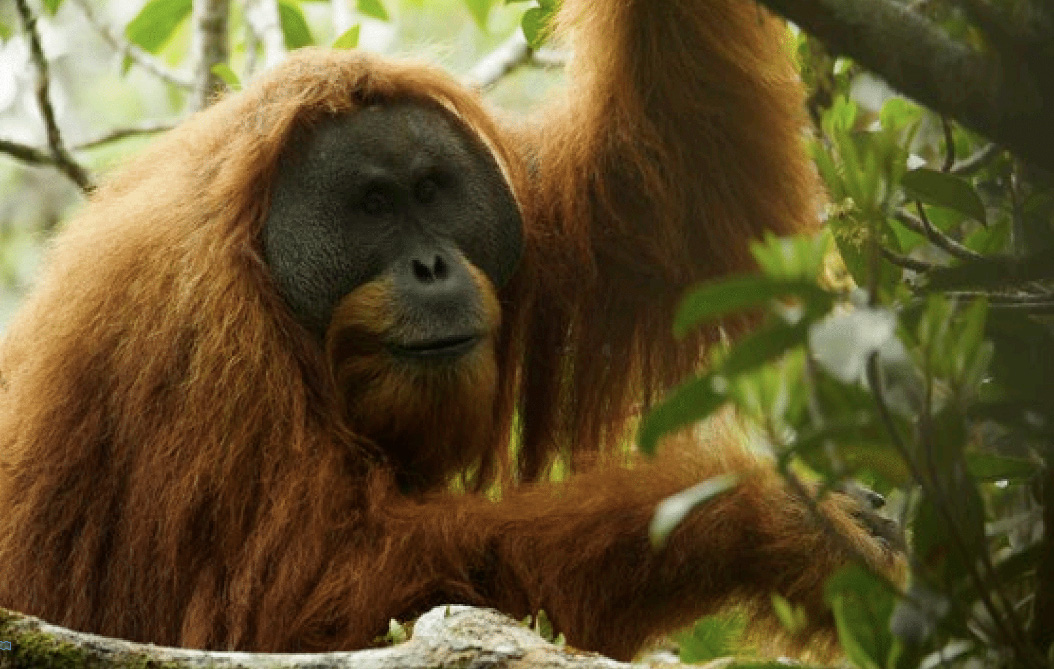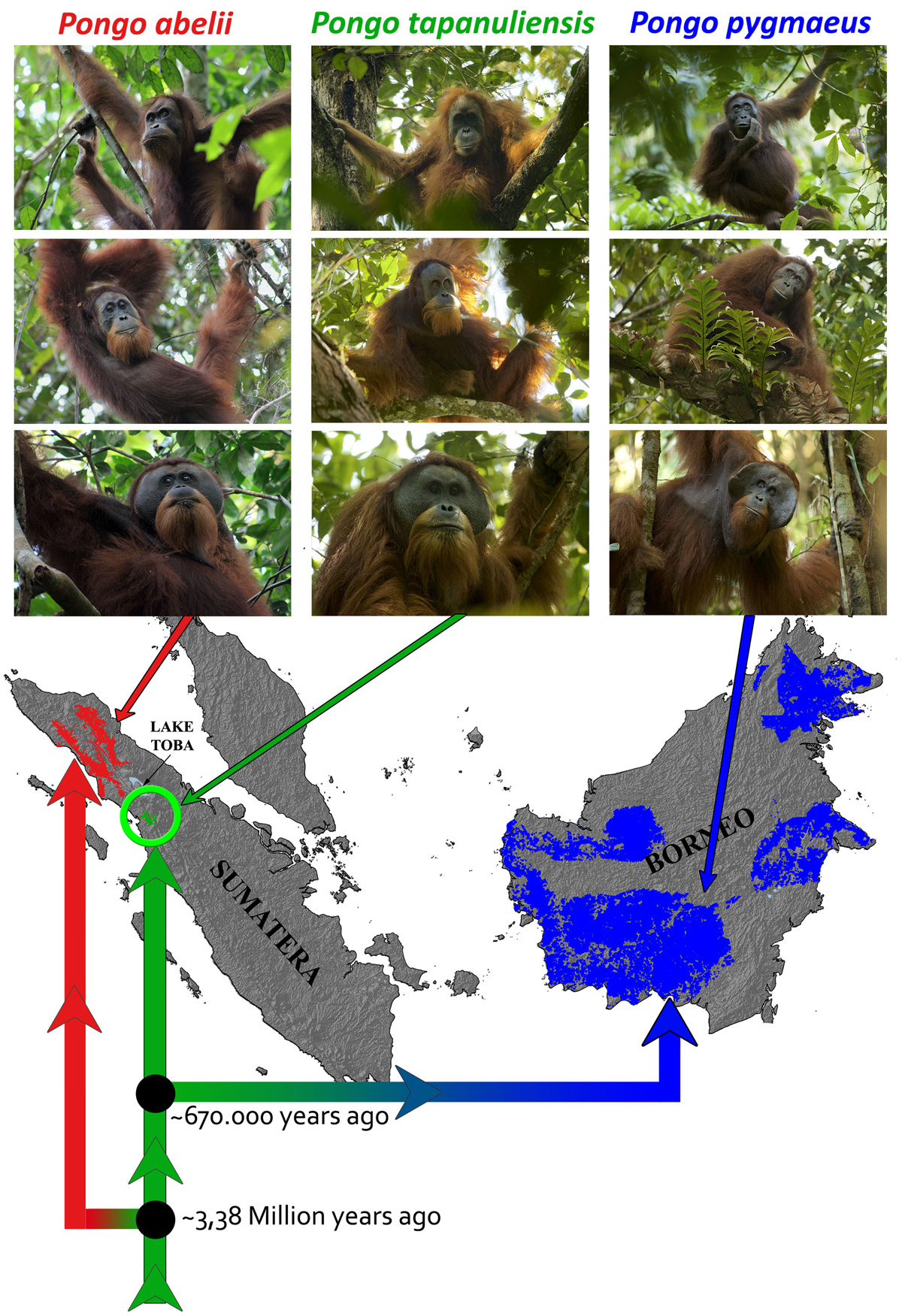Tapanuli Orangutans

6 November 2017 — A team of Indonesian and international scientists have described a new species of orangutan, Pongo tapanuliensis, in a paper published on November 2nd in the scientific journal Current Biology.
The orangutans residing in the Batang Toru Ecosystem, where the Sumatran Orangutan Conservation Programme (SOCP) has worked since 2005, are distinct from the Bornean (Pongo pygmaeus) and Sumatran orangutans (Pongo abelii), and are therefore a separate species, the Tapanuli orangutan (Pongo tapanuliensis).
Why is the Tapanuli orangutan a new species?
Genetic differences are the first reason for the differentiation of the Tapanuli orangutan species. Research indicates that there was a genetic separation from the Sumatran orangutan about 3.38 million years ago, whereas the Tapanuli orangutans split from the Bornean orangutans approximately 670 thousand years ago.
There are also a number of morphological differences seen in the Tapanuli orangutans:
- The skull and jaw bones of the Tapanuli orangutan are less robust than those of the Sumatran and Bornean orangutans;
- The hair is thicker and more curly;
- The male Tapanuli orangutan has a moustache and protruding beard with flatter cheek pads, covered in fine blonde hair;
- Their molar sizes differ from fossil orangutans (from the Pleistocene period);
- The Tapanuli orangutan long call differs from that heard in the other two species;
- They eat plant species that have never been seen consumed by the other orangutan species, including aturmangan (Casuarinaceae) seeds, sampinur (Podocarpaceae) fruits and flowers, and agatis (Araucariaceae).
Quick facts about Pongo tapanuliensis and their habitat:
- Less than 800 individuals remain in the wild;
- They are only found in the Batang Toru Ecosystem, in all three subdistricts of Tapanuli, North Sumatra;
- In total, the Batang Toru Ecosystem comprises 150,000 hectares, with just 110,000 (1,100 km2) of this as current orangutan habitat;
- Approximately 85% of the Batang Toru Ecosystem is listed as ‘Protected Forest’, with the remaining 15% of primary forest area listed as ’Other Use Area’ or ‘Logging Forest’;
- Most of their remaining habitat is above 850m asl;
- The Tapanuli orangutans are split into 2 main blocks (east and west) by the Sumatran fault line, with a third, smaller population in the Sibuali-Buali Nature Reserve, located adjacent to the west block;
- Re-establishing connectivity between these three separated populations is key to the survival of the species, by avoiding inbreeding;
- Tapanuli orangutans are very slow to breed, with females having their first offspring at around 15 years of age, with the interbirth interval thereafter being approximately 8-9 years. They can live until 50-60 years of age;
- The new species designation is based on research in genetics, morphology, and behaviour;
- This new species is now the rarest and most threatened species of great ape in the world (even rarer than the mountain gorillas of Africa);
- The Tapanuli orangutan will be included in the IUCN Red List with an immediate entry as ‘Critically Endangered’.

Read more about Batang Toru and the new species on the SOCP website and also at www.batangtoru.org!
